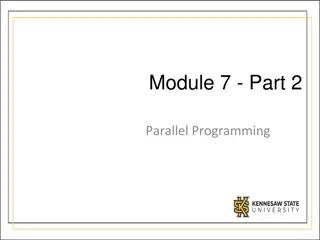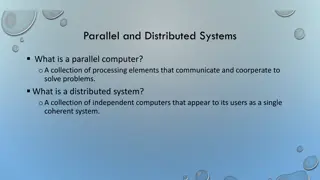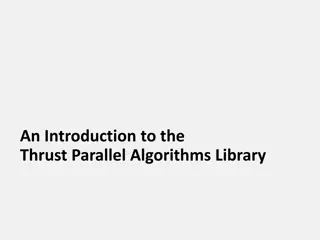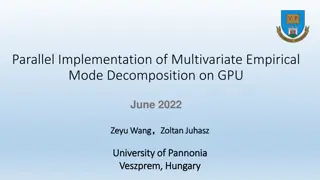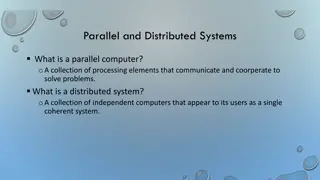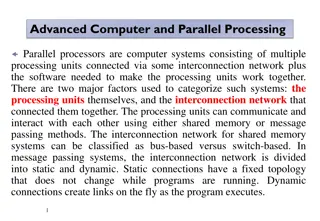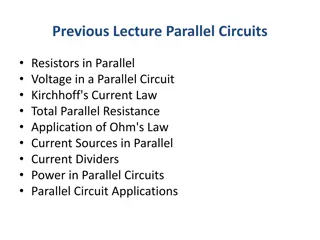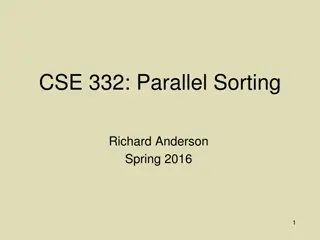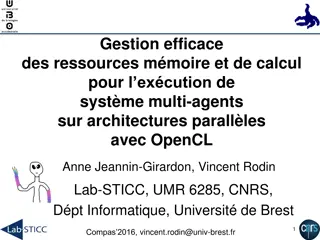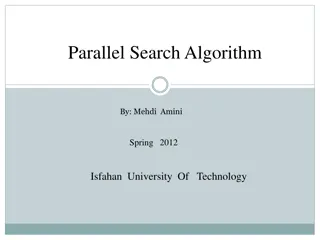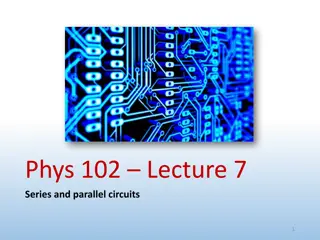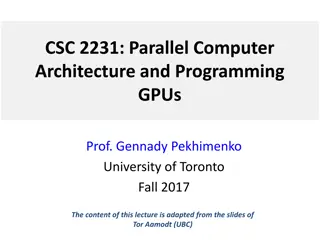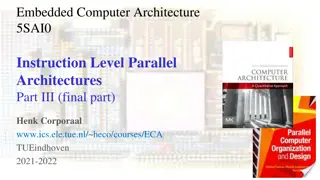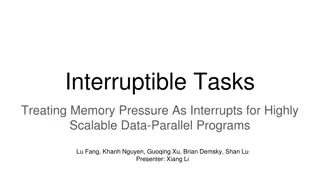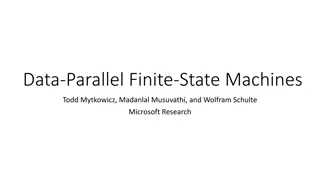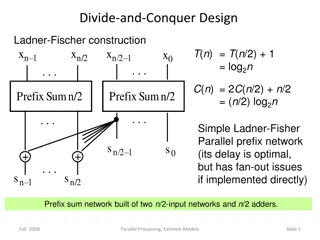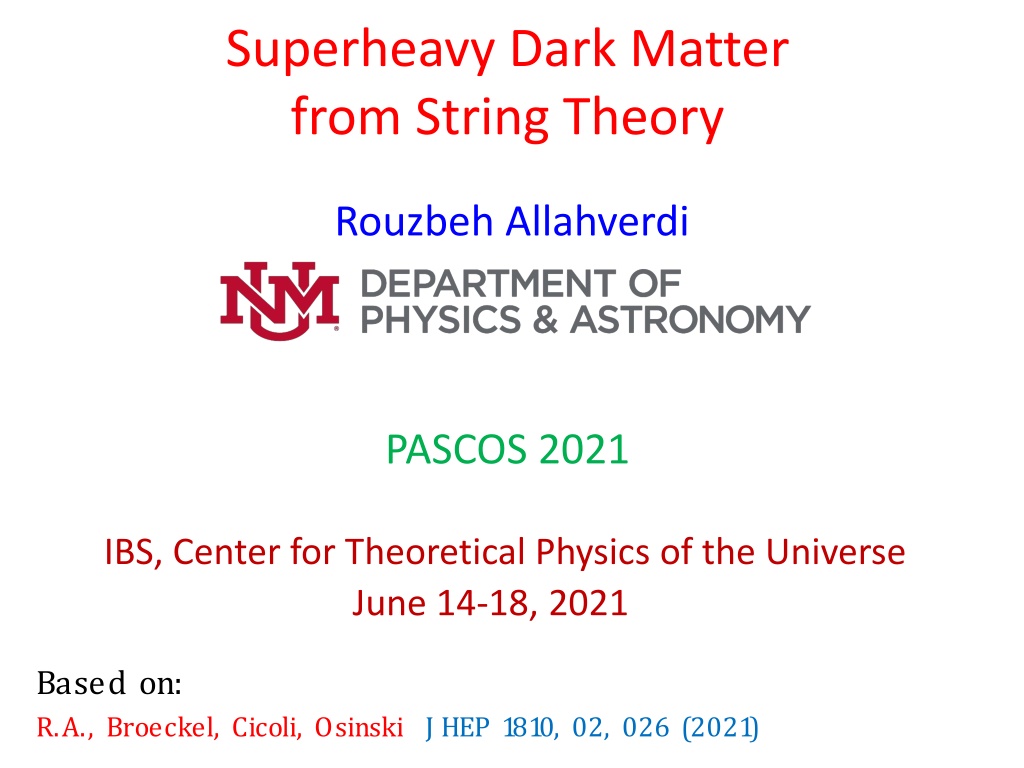
Superheavy Dark Matter from String Theory Insights
Exploring the concept of superheavy dark matter in the context of string theory, this study delves into the fundamental questions surrounding dark matter's nature, relic abundance, and implications for particle physics and cosmology. It highlights the role of string constructions in providing a comprehensive description of the early universe and addressing the need for beyond the Standard Model physics. Various theoretical scenarios are discussed, focusing on achieving the correct density perturbations and avoiding thermal overproduction of dark matter. Additionally, the implementation of these scenarios within sequestered frameworks is evaluated for producing the desired dark matter relic density while minimizing excessive dark radiation.
Download Presentation

Please find below an Image/Link to download the presentation.
The content on the website is provided AS IS for your information and personal use only. It may not be sold, licensed, or shared on other websites without obtaining consent from the author. If you encounter any issues during the download, it is possible that the publisher has removed the file from their server.
You are allowed to download the files provided on this website for personal or commercial use, subject to the condition that they are used lawfully. All files are the property of their respective owners.
The content on the website is provided AS IS for your information and personal use only. It may not be sold, licensed, or shared on other websites without obtaining consent from the author.
E N D
Presentation Transcript
Superheavy Dark Matter from String Theory Rouzbeh Allahverdi PASCOS 2021 IBS, Center for Theoretical Physics of the Universe June 14-18, 2021 Based on: R.A., Broeckel, Cicoli, Osinski J HEP 1810, 02, 026 (2021)
Introduction: The present universe according to observations: BSM needed to explain 95% of the universe. Important questions about DM: What is the identity of DM? How did it acquire its relic abundance? Profound consequences for: Particle Physics (BSM) Cosmology (thermal history) String constructions provide a UV complete description of the early universe (inflation to BBN), as well as BSM.
Type IIB flux compactifications typically predict: ???? ?3/2 Obtaining the correct amplitude for density perturbations results in: ???? 1010 1011 ??? How to reconcile this with low-energy SUSY ? ????? ?(???) (1) ???? ?3/2 ????? ?(???) KKLT with two exponents (as in the racetrack model) tuned situation Kallosh, Linde J HEP 1 2, 004 (2004) ???? ?3/2 ????? ?(???) (2) Sequestered LVS very specific brane configurations and Kahler metric Blumenhagen, Conlon, Krippendorf, Moster, Quevedo J HEP 09, 007 (2009)
Lets consider the more natural case: ???? ?3/2 ????? ?(???) This will result in thermal overproduction of DM. Griest, Kamionkowski PRL 64, 615 (1990) But, string constructions generically result in non-standard thermal histories that involve epoch(s) of EMD driven by string moduli. Kane, Sinha, Watson IJ MPD 24, 1530022 (2015) The entire DM abundance can be directly produced from decay of a modulus : ? 1/2 3 ?? ?? ?? Branching scenario Gelmini, Gondolo PRD 74, 023510 (2006) R.A., B. Dutta, Sinha PRD 83, 083502 (2011)
This scenario can be implemented in sequestered LVS, volume modulus plays the role of . R.A., Cicoli, B. Dutta, Sinha PRD 88, 095015 (2013) ? However, the simplest realization does not work for superheavy DM: ??? ?(10 3) ?? ?? ? 4.2 10 101 ??? ? ?? (1) ??? ? R.A., Cicoli, B. Dutta, Sinha J CAP 10, 004 (2014) (2) decay produces an excess of DR. The branching scenario should be modified in this case so that it: (1) Gives rise to a sufficiently small DM relic density. (2) Does not produce an excessive amount of DR. R.A., Broeckel, Cicoli, Osinski J HEP 02, 026 (2021)
The Scenario: inflaton modulus ?: ?: ??> ??> ?? Post-inflationary thermal history: ? ? < ???? (1) : EMD from inflaton oscillations. Inflaton decay produces DR and a subdominant component of DM. ?? ? < ? (2) : Inflationary reheating completes, transition to RD. ? ? < ?? (3) : EMD driven by modulus oscillations. Entropy generation at the end of this stage dilutes DR and DM from (1). ? ? < ?? (4) : Modulus decay completes. Transition to RD prior to the onset of BBN by modulus oscillations.
: final reheating temperature Note: ?? ? ,??? ?? ?? Expected: a longer EMD epoch results in a larger dilution factor.
EMD also affects inflationary observables: ?: tensor-to-scalar ratio The scalar spectral index follows: In our model (also for Starobinsky model & Higgs inflation): ?? ?? ,??,??? ? = 2 ?? Opposite constraints from and on the duration of EMD. ? ??
The Model: Type IIB model with three Kahler moduli: Mass spectrum:
DM is the LSP MSSM-like hidden sector: ?? ??? (1) . ??? (2) R-parity violation. (3) Very light hidden electrons (similar to visible sector neutrinos). Couplings:
Giudice-Masiero contribution: ?? ??= 12
Inflationary observables: Obtaining the right density perturbations gives the following relation:
Results: We impose the requirement from density perturbations, and find the DM mass that corresponds to the observed abundance. We perform this over the expected range of parameters (1444 points): ?0 [1,103] ?? [10 3,0.1] ? [10,104] ?? [0.01,1] Cicoli, K. Dutta, Maharana, Quevedo J CAP 08, 006 (201 6) 72% of the parameter set gives rise to the correct DM abundance. The resulting DM mass is always in the following range: ?? 1010 1011 ???
Points that yield the correct density perturbations and DM abundance: ?? ? 21/8 ? 13/4 2 ?? ??
Subsets according to Subsets according to ?? : ??:
Black: ?? ?? ? ? 2? ????? 0.9565 < ??< 0.9733 Red: ?? ?? ? ? 3? ????? (??? ??????? 2?) 0.9523 < ??< 0.9775 Planck 2018 Astron. Astrophys. 641, A10 (2020)
Numerical Analysis: System of Boltzmann equations governing various species: Benchmark point to numerically solve this system:
Evolution of the various energy densities: Evolution of the visible sector temperature:
Conclusions: Superheavy DM can arise typically within string theory Epoch(s) of EMD from moduli can yield the observed DM abundance Presented a type IIB LVS model with an epoch of modulus domination Successful inflation & right DM content for ?? 1010 1011 ??? Multiple epochs of modulus domination possible, not advantageous Possible indirect detection signal from decaying superheavy DM Work in progress

